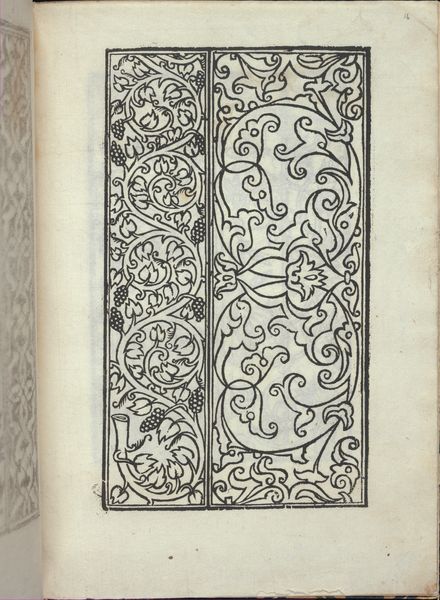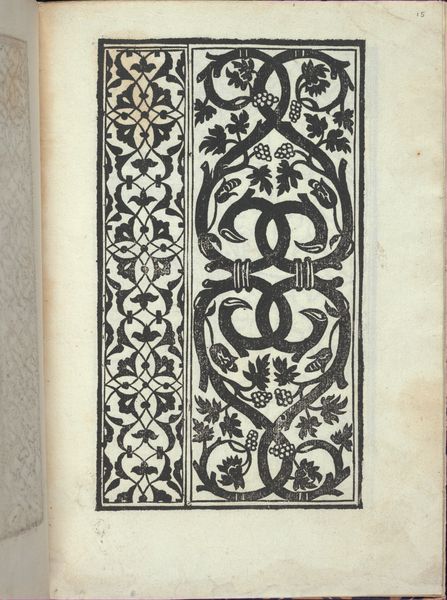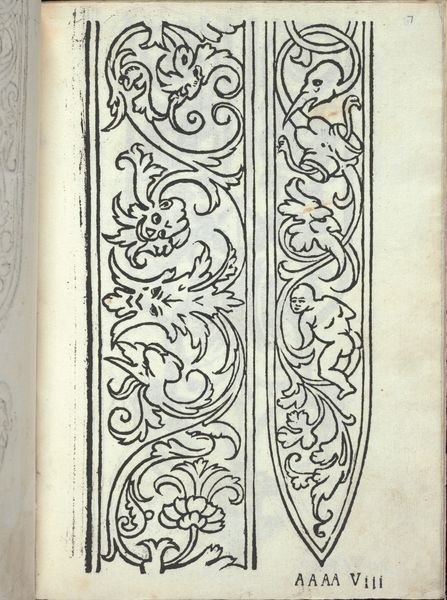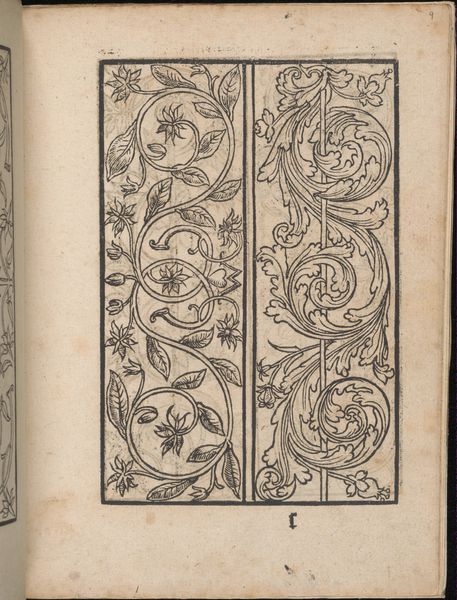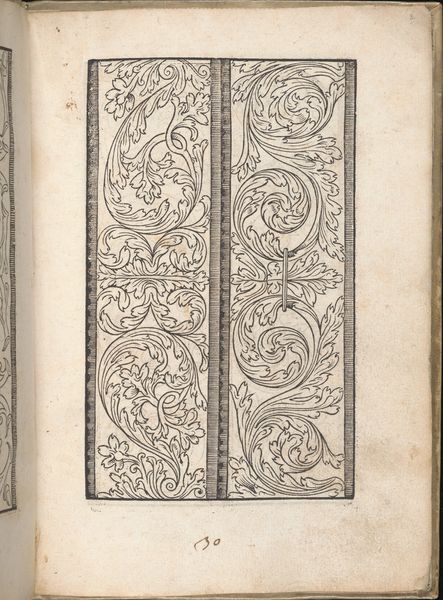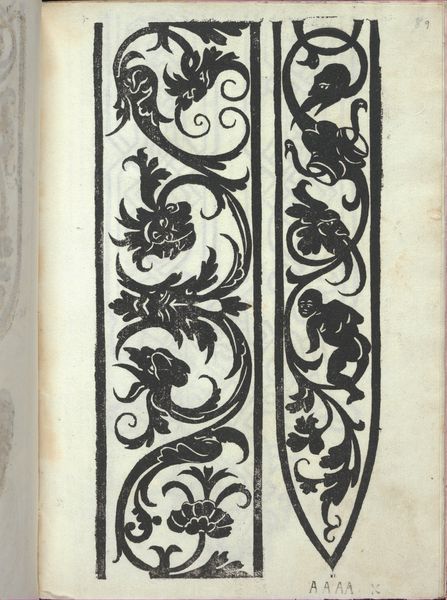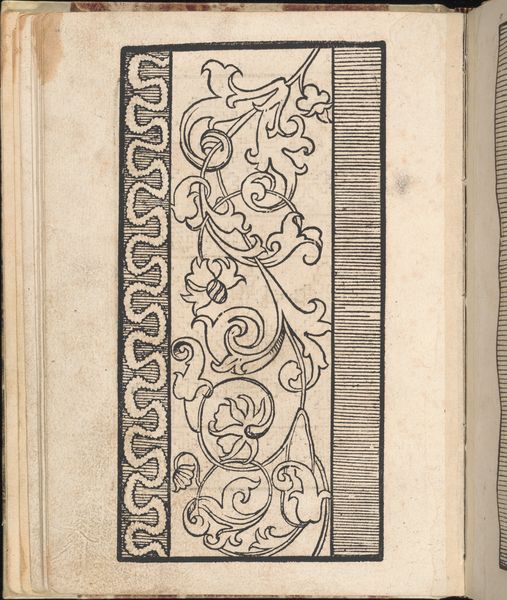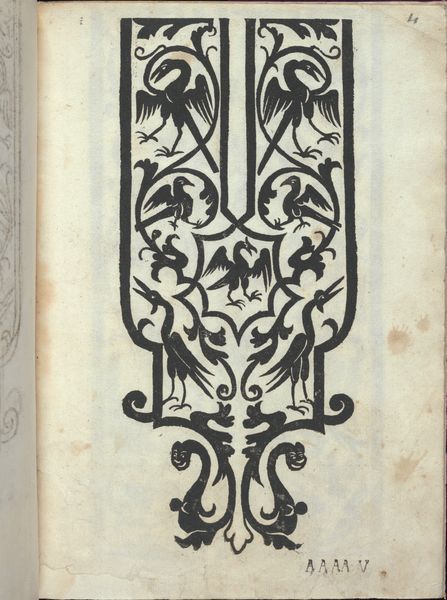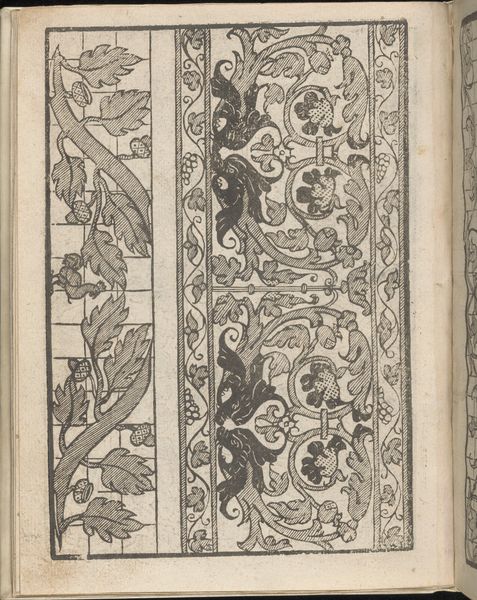
Libro quarto. De rechami per elquale se impara in diuersi modi lordine e il modo de recamare...Opera noua, page 14 (recto) 1532
0:00
0:00
drawing, graphic-art, print, woodcut
#
drawing
#
graphic-art
#
medieval
#
ink paper printed
# print
#
book
#
personal sketchbook
#
geometric
#
woodcut
#
line
Dimensions: Overall: 8 3/8 x 5 7/8 x 3/16 in. (21.2 x 14.9 x 0.5 cm)
Copyright: Public Domain
Curator: It looks like a page torn straight from a Tim Burton sketchbook, if he’d been kicking around in the 16th century. Editor: Precisely the period we're in. This page is from Alessandro Paganino's "Libro quarto. De rechami," published in 1532. It's a woodcut print—a drawing translated into ink on paper—showcasing embroidery patterns. Curator: Embroidery! See, I knew there was a kind of…texture implied. It feels graphic and bold, but also surprisingly delicate in those repeating floral and geometric patterns. Almost hypnotic. Editor: Indeed. Manuals like this one were instrumental in standardizing and disseminating embroidery designs across Europe. This was about the democratization of ornament, bringing fashionable designs to a wider public, beyond courtly circles. Curator: A fifteenth century Pinterest! Except instead of algorithms feeding us more of what we already like, these patterns actively shaped taste, influencing visual culture in ways we’re still probably untangling. Editor: Exactly. And notice how the two columns contrast – one strict and geometric, the other organic and flowing with grapevines. It’s like Paganino is offering options, reflecting different tastes and skill levels among embroiderers. He certainly didn't want to impose his personal style on these new and expanding readership, I guess? Curator: And beyond that… what does the very existence of a pattern book suggest about that period? How society appreciated craftsmanship and skill? What's that really teach us about ourselves, as opposed to just an appreciation for the thing? Editor: Yes! Thinking about skill in a society is indeed key. And finally, this one shows how printed books did change that idea of craftsmanship because it also changed production methods. In a certain sense this book reflects changes to ideas about women's artistic roles and labor in general. Curator: So much information encoded in these delicate lines! Looking at this gives me an unexpected appreciation for the political heft these objects had as an agent of taste during the 16th Century. And of course it feels so incredibly contemporary in spirit, don’t you think? Editor: Absolutely, a fascinating intersection of art, history, and design. I come away with more curiosity than I started.
Comments
No comments
Be the first to comment and join the conversation on the ultimate creative platform.
